Announcements
Drinks
EU: reforms more important than external threats for future sovereign credit profiles
By Alvise Lennkh-Yunus and Brian Marly, Sovereign and Public Sector
EU member states still have agency to raise the continent’s growth outlook, reduce external vulnerabilities – especially related to dependency on US technologies and Chinese rare-earths imports – and reform welfare systems to better manage the fiscal pressures of an ageing society.
There is significant scope to deepen the single market.
Estimates suggest that effective internal tariffs within the EU stand at around 40% for goods (excluding agriculture) and 100% for services.
Even allowing for the inflation of those estimates due to national preferences, these figures indicate the potential wide margin for manoeuvre that the EU has considering the headline US tariff on goods is now 15% (Figure 1).
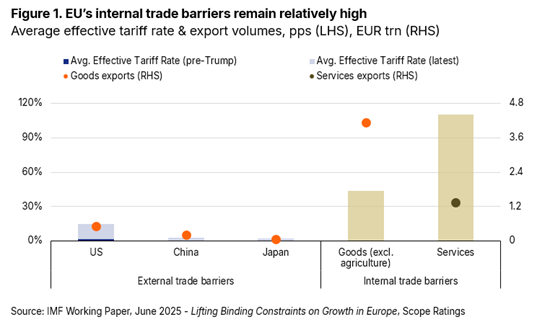
Higher US trade levies will have uneven impact on EU countries
To be sure, US tariffs are the highest for decades and the impact of the shift in US trade policy on Europe is uneven.
Central and eastern European countries face higher effective tariffs of around 20-25% such as Slovakia (A/Negative), Poland (A/Stable) and Hungary (BBB/Stable), for example, while Ireland’s (AA/Stable) is just 7% given the pharmaceutical-products carve-out which may yet change.
However, the overall economic impact of higher US levies on imports from Europe on EU member states appears manageable considering it is likely to be less severe than in previous crises.
We expect a cumulative adverse impact of about 0.5 to 0.7pp of GDP over two years, which contrasts with GDP declines of about 2.5pp following the Covid-19 and energy crises, and 8pp after the global financial crisis in 2008 (Figure 2).
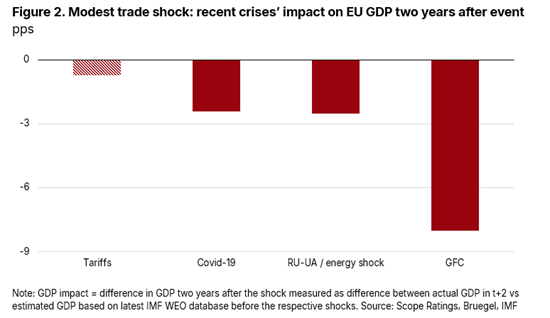
Europe’s policy makers need to reduce internal trade barriers
Following the EU-US trade agreement, which removes some uncertainty for business and households, the policy focus should shift back towards removing Europe’s internal barriers.
These challenges can be addressed through reforms that increase labour mobility, foster deeper capital markets, improve energy co-operation and reduce regulatory fragmentation. The European Commission estimates that doing so could unlock around EUR 700bn or around 3pp of growth over 10 years.
Although well understood, these reforms remain politically sensitive and complex to implement. There is no low-hanging fruit to pick. Still, the scale of potential gains demonstrates that changing Europe’s growth outlook and potential is ultimately in its own hands.
Divergent impact on EU public finances from higher defence spending
Similarly, the public finance implications from higher defence spending appear broadly manageable, at least for NATO members aiming to achieve the revised 3.5%-of-GDP spending target in coming years.
Countries most impacted have either already increased military budgets, such as Poland and the Baltics, or have sufficient fiscal space to do so, such as Germany (AAA/Stable).
Several others are unlikely to significantly raise defence budgets, because the perceived threat to their security is lower or their public finances are already in a relatively weak position.
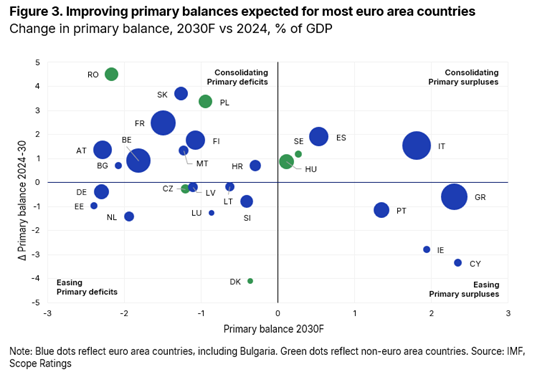
Governance and reforms key drivers for public debt trajectories and credit profiles
Potential growth and underlying structural fiscal pressures, especially from welfare spending and rising interest payments, are the main drivers of our debt-to-GDP projections until 2030.
We expect significant convergence between member states, with previously lower rated countries reducing debt sharply due to economic and fiscal reforms in recent years (Figure 4).
Greece (BBB/Stable), Cyprus (A-/Positive) and Portugal (A/Stable) are likely to reduce debt by about 50-75pp of GDP over this decade.
Conversely, more highly rated sovereigns – Belgium, France (both rated at AA-) and Austria, Finland (both rated AA+) – face worsening fiscal dynamics, underlined by our Negative Outlooks.
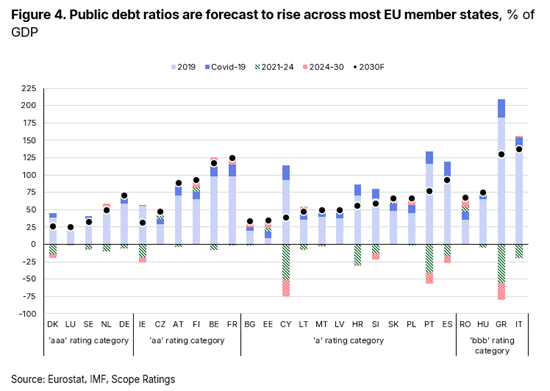
In the absence of additional shocks, domestic fundamentals will thus drive EU member states’ public debt dynamics. Electoral choices, the formation and stability of governments, and resulting policy priorities will be critical for sovereign credit profiles.
Still, political paralysis in France and Poland, with important elections due in 2027, point to the difficulty of finding domestic and European consensus on breakthrough reforms.
The outcome of these elections may materially change the balance of power within the European Council, potentially making it even more challenging to implement ambitious structural reforms.
